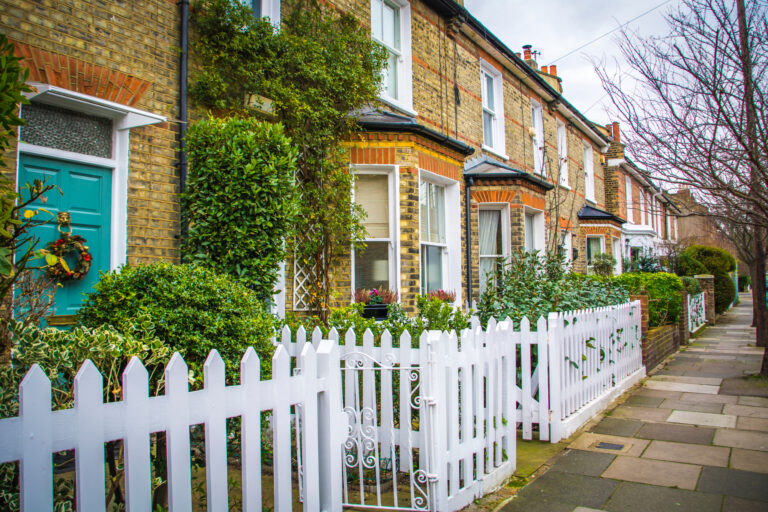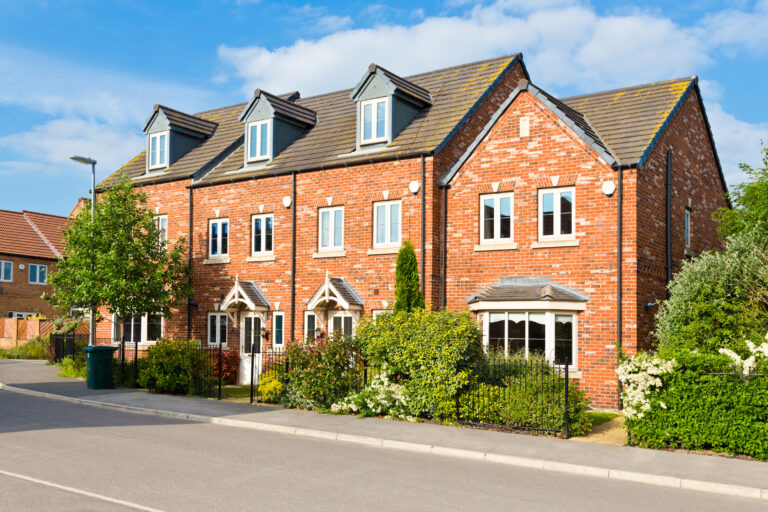With so many mortgage types available it can be difficult to know where to start. Although mortgages tend to function in a similar way, the right mortgage for you will depend on your personal circumstances and your financial situation. Have a read of our guide below to see which mortgage type will best suit your needs.
Types of mortgage loans
The two main types of mortgage loans available in the UK are repayment mortgages and interest only mortgages.
Repayment mortgages
Repayment mortgages are the most common type of mortgage. When you have a repayment mortgage, you’ll pay back some of the capital you borrowed to buy your house, as well as some of the interest on the loan, every month. This way you build up equity in your house and the amount you owe decreases until you’ve paid it all off and you own your house completely.
Interest-only mortgages
If you get an interest-only mortgage, you’ll only pay back the interest on the loan each month; you don’t pay back any of the money you borrowed to buy the property. This means that your monthly payments are lower, but when you get to the end of your mortgage term, you have to pay off the full amount that you borrowed in one lump sum.
When you take out an interest-only mortgage you end up paying more overall. This is because the amount that you’ve borrowed doesn’t go down. With a repayment loan, the amount you owe decreases over time as you pay back some of the loan every month. The interest on the loan decreases over time too, because the amount you owe is constantly being reduced.
Variable rate mortgages and fixed rate mortgages
These different mortgage types are both forms of repayment mortgages, however, the difference between them is the way that the interest rate is determined.
A variable rate mortgage
With a variable rate mortgage, the interest rate can change at any point. This means that the amount of money you pay each month will fluctuate. You’re not locked into a deal like this for a set amount of time, so you can change providers whenever you like.
A fixed rate mortgage
When you take out a fixed rate mortgage, the amount of interest you pay will stay the same for a set amount of time. This means that you know exactly what you’ll be paying each month and this can’t be changed by any fluctuations of the Bank of England base rate.
Normally, the amount of time your fixed rate is set for is two, three or five years. This is a good choice if you’re worried that interest rates are going to rise, however, if the interest rates fall, you won’t benefit from it. If you pull out of your mortgage deal early, there’s likely to be big charges for doing so.
At the end of your fixed rate mortgage deal, your lender will switch you to their standard variable rate (SVR), which might be much higher than the rate you’ve been paying. This is why many people decide to remortgage at the end of a fixed rate period, so that they can get a better mortgage deal.
What is the most common type of mortgage?
In the UK, repayment mortgages are by far the most popular choice. This is because most people like to work towards paying off their loan each month, as well as the interest on the loan, so they can work towards owning the property outright. More people tend to choose fixed rate mortgage types so that they know exactly what they’re paying over a set amount of time. This is reassuring if interest rates are on the rise, but it means that you won’t benefit should the interest rates fall (without paying large early repayment fees).
Different types of mortgages in the UK explained
1. Buy to let mortgage
There are some key differences between buy to let mortgages and standard residential mortgages. Buy to let mortgages are aimed at prospective landlords, which means that the property will be rented out to tenants. Due to this, the mortgage application will not just consider the applicant’s income, but also the potential income from renting out the property. You need to be in a strong financial position to get a buy to let mortgage because you’re taking on a second mortgage (most lenders won’t provide a buy to let mortgage to a first time buyer).
Pros and cons: Buy to let mortgages help you to start out as a landlord or to grow your property portfolio. However, fees and interest rates tend to be higher, and you may need a relatively big deposit (usually around 25%, but it can be higher).
Who is this mortgage best suited to: People in a strong financial position who want to become a landlord or increase their current property portfolio.
2. Help to buy mortgage
Help to buy is a scheme that was set up by the UK government in order to help more people to get on the property ladder.
The Help to Buy Equity Loan helps first time buyers to buy a new build property by loaning them up to 20% of the property’s value. There’s also the Help to Buy Shared Ownership solution, where you can buy a share of a property’s value. The scheme changes over time and certain offers have a deadline so keep checking the government’s website for updates.
Pros and cons: The scheme helps people to access the property market when they might not be able to otherwise. However, be aware that you will need to repay the loan eventually and that the interest rates aren’t fixed.
Who is this mortgage best suited to: First time buyers struggling to get a mortgage and/or deposit for their first home, and who want to live in a new build.
3. 95% mortgage
This type of mortgage deal means that you can borrow 95% of the property’s value and that you only have to pay a deposit of 5%. The amount you can borrow will depend on your income and credit score.
Pros and cons: This is a great deal for people struggling to save for a deposit. However, interest rates on these mortgages tend to be high so it’s very difficult to build up equity in the property.
Who is this mortgage best suited to: People who are struggling to save a deposit, but that can afford to pay higher interest rates.
4. Joint mortgages
When you take out a joint mortgage, it’s a mortgage deal that includes you and one other person (or more). Each individual is named on the mortgage agreement and this means that each person is responsible for the monthly repayments.
Pros and cons: When you apply with one other person (or more) you can put your incomes together to be able to afford a more expensive property. You can also put your savings together so that you can afford to pay a higher deposit, which may get you better mortgage deals. However, you’ll have to be willing to share the responsibility of repayments and agree to the equity split should you decide to sell the property.
Who is this mortgage best suited to: Couples or groups of people that want to live together and work towards owning their own home.
5. First time buyer mortgage
Some lenders provide special deals for first time buyers to help them get on the property ladder. You might be allowed to pay a smaller deposit amount or reduced application fees.
Pros and cons: Special deals like these can make the first few years a lot easier. However, if you pay a smaller deposit, you’ll owe more on your mortgage in the long run.
Who is this mortgage best suited to: First time buyers.
6. Tracker mortgages
These are variable rate mortgages where the interest rate you pay follows (or tracks) the Bank of England base rate. Each month you pay the base rate plus a percentage that’s set by your provider.
For example, your provider might have a set rate of 2%. If the Bank of England base rate is currently 1.75%, the interest rate you’ll pay is 3.75%.
Pros and cons: If the base rate falls, so do your monthly payments. However, if the base rate rises, your payments will do the same. Some lenders may set a minimum amount that you’ll pay no matter how low the base rate falls.
Who is this mortgage best suited to: People who think that interest rates are likely to fall, but that have the means to cover higher monthly payments should they rise.
7. Standard variable rate mortgages
These mortgages have a variable interest rate that’s set by the mortgage provider. Although it’s not directly linked to the Bank of England base rate, it’s highly influenced by it.
Pros and cons: As your payments can change each month, this type of mortgage is hard to budget for. However, with this type of mortgage you can leave at any time, or overpay if you’ve had extra money come in, so there is more flexibility to it.
Who is this mortgage best suited to: This mortgage type is useful for people who may want to move soon or who want more freedom to change mortgage providers or make overpayments without penalty.
8. Discount mortgages
With discount mortgages, you pay a reduced amount of your provider’s standard variable rate (SVR). The discounted rate is fixed, and stays the same as it tracks the SVR. For example, if you arrange a 1% discounted deal, and the current SVR is 4.5%, you would pay a rate of 3.5%. If the SVR went up to 5%, you’d pay a rate of 4%.
Pros and cons: These deals are very helpful in the first few years of buying a house because they can keep your payments lower. However, if interest rates rise, your payments will rise too, so you need to be prepared for higher monthly payments. Also, discount mortgage deals are set for a certain amount of time and after that you’ll be put on your lender’s SVR so your payments are likely to go up.
Who is this mortgage best suited to:
First time buyers benefit from this type of deal as it can help them to keep monthly payments a little lower (depending on interest rates) and ease them into monthly mortgage payments.
9. Guarantor mortgage
If you take out a guarantor mortgage, you need a family member or friend to agree to make your monthly payments for you if you can’t cover them.
Pros and cons: You can often get much better deals if you have a guarantor as backup. In fact, sometimes you can get a full mortgage without paying a deposit. However, they need to own their own home (or have a small mortgage left on it), be able to prove they can afford your repayments and show that they have a good credit rating.
Who is this mortgage best suited to: People who are struggling to get a mortgage deal on their own and that have a friend or relative in a strong financial position that’s happy to help.
10. Flexible mortgage
These types of mortgages give you more freedom with how you manage your repayments. Depending on your deal you might be able to have months when you overpay, or underpay. Sometimes you can even take payment breaks or borrow back some of the money that you’ve already paid off.
Pros and cons: This is a great option if your income fluctuates or you have times when your finances are stretched. However, you’re likely to be charged higher interest rates for the increased flexibility.
Who is this mortgage best suited to: This is a good choice for those who might want to regularly overpay their mortgage, or who have some months where they’re under a lot of financial pressure.
The different types of mortgages available can be confusing, but the best choice for you depends on your personal circumstances. Factors like being a first time buyer, or wanting to buy with friends, or to make money from property, will determine the type of mortgage you want to apply for. Your financial position will also determine the size and type of mortgage loan you can afford.
If you’re thinking about remortgaging or selling your home, start by finding out what your property’s worth by getting a free property valuation today or book a mortgage appointment with Embrace.




